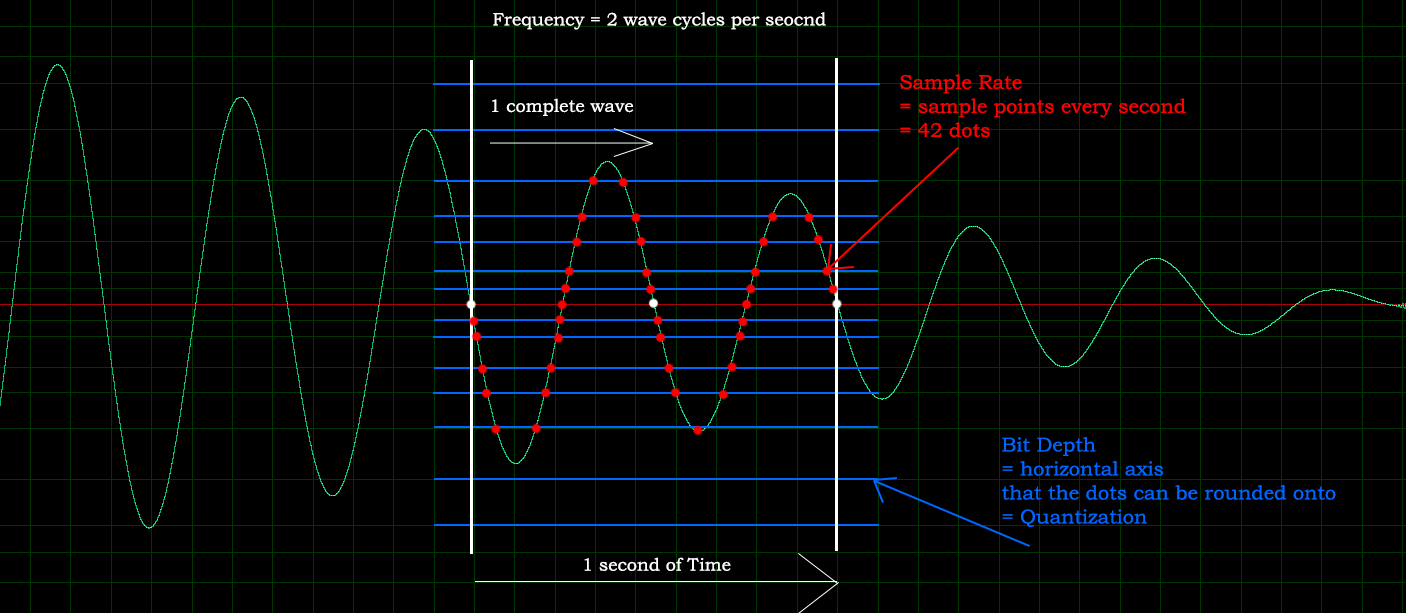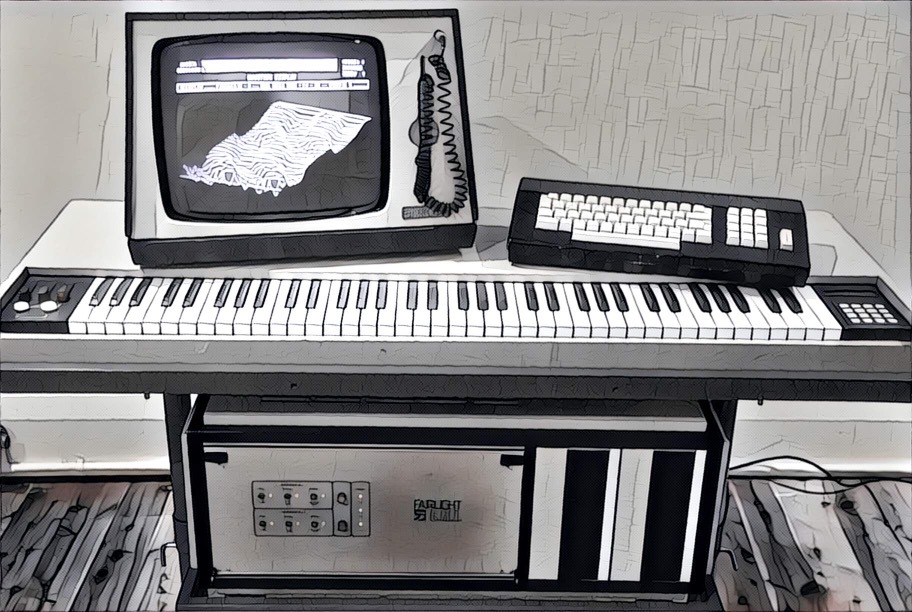What's the difference between Bit Depth and Sample Rate?
To get started, let's see this - very simple - breakdown of the two terms:
Bit Depth |
Sample Rate |
| Horizontal axis | Verticle axis |
| Quantization | Samples |
| Throughout | Per second |
So, if we look at a visual representation of a sound wave, the Sample Rate would be represented in little dots along the curve of the wave. The higher the Sample Rate, the more dots along the curve. The Bit Depth would be represented in the form of horizontal axis which the dots can be rounded onto. The more horizontal axis the more accurately the curve can be represented via the dots.

Did you notice?
In the example above, the two positive amplitudes or peaks in the curve are not accurately defined since there isn't enough horizontal axis (Bit Depth) for the dots to sit on at the top of the curves. In this case the sound will have some artifacts and inacurate amplitudes which will often be heard as white noise.
Bit Depth
In terms of the technological development of music, Bit Depth was somewhat of a limiting factor in terms of audio quality.
Often compared with pixels, Let's take a look at a visual example of how an increased bit depth can contribute to a more clear sound.
8-Bit |
16-Bit |
24-Bit |
 |
 |
 |
Anyway, for audio recording, I reccomend using a 24-Bit Depth and a 44.1kHz Sample Rate (CD or digital uploads.)
However, If the end goal will be tied to video 48kHz is reccomended.
Happy music making!
Oh, and take a look at this picture of the very first Polyphonic Digital Sampler (Fairlight CMI) - drool!


